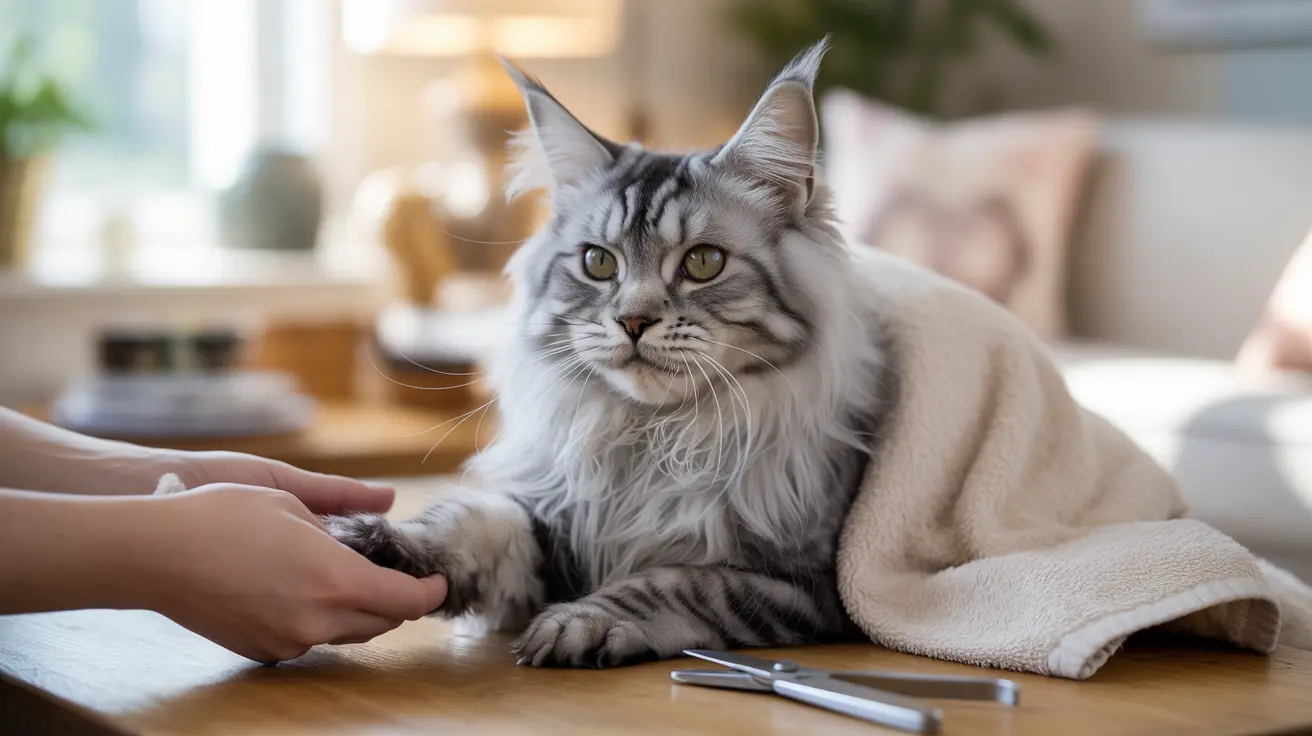Essential Tools and Safety Preparations
Before attempting to trim your resistant cat's nails, gather these crucial supplies:
- Cat-specific nail clippers (either guillotine or scissor-style)
- Styptic powder or cornstarch for emergency bleeding
- A thick towel for the "burrito method"
- High-value treats (like Churu or tuna paste)
- Good lighting source
- Optional: cat nail file for smoothing rough edges
Understanding Your Cat's Nail Anatomy
Successful nail trimming starts with understanding your cat's nail structure. The pink quick contains blood vessels and nerves, which must be avoided during trimming. Most cats have clear nails, making it easier to identify this sensitive area. Always aim to cut only the white portion of the nail at a 45-degree angle.
The "Purr-fect" Preparation Process
Creating a Calm Environment
Choose a quiet room with good lighting and minimal distractions. Place your supplies within easy reach, and consider using calming pheromone sprays or diffusers to help relax your cat.
Positive Association Training
Begin conditioning your cat weeks before attempting nail trims:
- Regularly touch and massage their paws during calm moments
- Let them investigate the nail clippers
- Offer treats during paw handling
- Practice the restraint position without trimming
Effective Restraint Methods
The Burrito Technique
The "burrito method" is highly effective for resistant cats:
- Wrap your cat snugly in a thick towel
- Leave only the paw you're working on exposed
- Ensure the wrap is secure but not too tight
- Keep their head covered if needed for added security
Two-Person Approach
Having a helper can significantly improve success rates:
- One person holds and comforts the cat
- The other person focuses solely on trimming
- Position the cat facing forward or away from the trimmer
- Maintain gentle but firm control
The Trimming Process
Step-by-Step Instructions
- Start with back paws (usually easier)
- Gently press the paw pad to extend the nail
- Identify the quick (pink area)
- Cut only the white tip at a 45-degree angle
- Reward immediately after each successful cut
- Take breaks as needed
Managing Difficult Moments
If your cat becomes overly stressed or aggressive:
- Stop immediately and try again later
- Consider trimming just 1-2 nails per session
- Use more high-value treats
- Try different times of day when your cat is naturally calmer
Frequently Asked Questions
How can I safely trim my cat's nails without cutting the quick when they hate nail clipping?
Always identify the pink quick before cutting and stay well within the white portion of the nail. Use cat-specific clippers and ensure good lighting. When in doubt, take off less rather than more.
What are the best techniques to restrain a cat that resists having their nails cut?
The burrito method using a thick towel is most effective. Alternatively, have one person hold the cat while another trims, or try trimming during naturally calm moments like after meals.
Which tools are recommended for trimming difficult or aggressive cats' nails?
Use professional cat nail clippers (either guillotine or scissor-style), never human nail clippers. Have styptic powder ready and consider using a cat nail file for finishing touches.
How can I gradually condition my cat to tolerate nail trimming sessions?
Start with regular paw handling during calm moments, offer treats during handling, let them investigate the clippers, and begin with just one or two nails per session. Consistency and patience are key.
What should I do if I accidentally cut my cat's quick and cause bleeding?
Immediately apply styptic powder or cornstarch to the bleeding nail. Apply gentle pressure until bleeding stops. Monitor the nail for infection and consult your vet if bleeding persists or signs of infection develop.
Conclusion
While trimming a resistant cat's nails can be challenging, success is possible with patience, proper techniques, and consistent positive reinforcement. Remember that building trust and comfort with the process takes time, but the investment in your cat's nail health is worth the effort.






